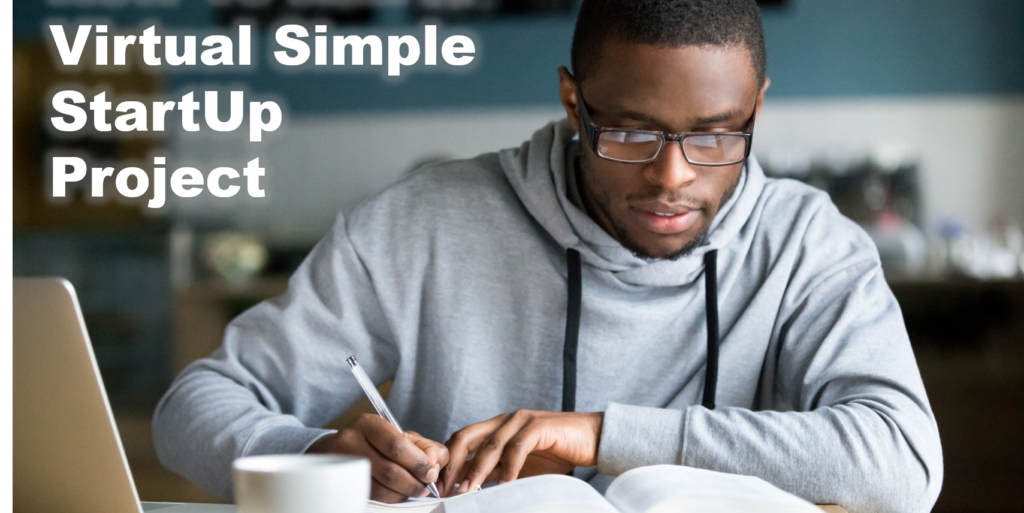There had been weeks of build-up and mentally preparing my students, with stories of student businesses past, the allure of the prize money in our county competition, and the promise of the riches that could come from having a successful startup. Finally the day arrived and on March 9th, 2020 my students and I started our Simple StartUp projects.
It was awesome!
My young entrepreneurs already had some ideas simmering in the back of their minds from the build-up period, and they started with an open mind to at least try something totally new that initially sounded a little scary to them. 5 days later… We all got told we were going home and didn’t know when we would be back in school.
At first, we thought it was going to be a 2 week thing, so thankfully I sent my groups home with their Simple StartUp workbooks and told them to carry on as if nothing had changed. They could text, call, or video call their teammates for collaboration. The workbook also has enough guidance for them to move through the chapters on their own for at least 2 weeks. They had to log 2 official team meetings (Appendix 4 in the student edition) whether they were working on their own or in a group. We had talked about the book sections and what they would need to think about along the way, so I felt confident that they could be successful if they tried.
I won’t lie. The first week was slow. As nearly every student treated it like a 2-week snow day, pens were thrown down and chromebooks closed as they explored their unexpected freedom. Honestly, who could blame them since I did almost the same thing!
Once we moved into the 2nd week, got the notice that schools were going to be closed for at least a month, and a full-lockdown had been issued in Maryland, we all started settling into the new reality. My students were amazing! They have almost all risen to the challenge of this remote learning situation.
I started hearing back about the team meetings that were happening through their reflective journals. Not only were they progressing with their business ideas, but some were pivoting to be able to function in a Covid-19 environment! [See article on how to help your students pivot] For example, one group totally shifted their plan of doing baked goods to producing disposable facemasks. They used a old t-shirts and paper towel/tissue combination, which they then sold using an honor system at the local grocery store! Seriously impressed teacher over here.
So how does this project look when the long term future is distance learning? Having the workbooks really makes a difference. If you can get them in the hands of the students, it will make the project 10 times easier since the workbook is a guide in itself. You just simply need to be there to answer questions and give some gentle guidance and reassurance as they hit roadblocks.
In my case, I recorded weekly videos and posted them through our Learning Management System (Schoology). Keep it simple! In these videos I talked through the upcoming section in the workbook, highlighted common mistakes made, tips for navigating the challenge in the current climate, and mostly encouragement to keep going and trying new things.
The Instructor Edition is really helpful at this point since it has teacher tips and prompts that you can use to help your students really think about the topic and how it applies to their business. At the end of the project, each business submitted a 3-5 minute video pitch of their video which was graded by me based on the rubric in the Instructor Edition. You can find the full rubric and other resources in the Resources section of the website.
If you didn’t get the chance to give the workbook to students or it’s impossible to get it to them now, you can still make this work. You, the teacher-guide, will just need to be a little more creative in how you guide your students through the content, and also assign them work to complete. Recording videos or hosting live calls with your students to go through a section of the workbook is a good place to start. Use your learning management system to create chunked tasks for your business teams to complete that are similar to the Business Activities in the book.
You can also find pdf versions of several of the Business Activities in the Resources section of the website. Use the Instructor Edition to break the tasks down into small actionable steps, and use live video or discussion boards where possible so that students can share challenges and help each other problem-solve through it, just like you would do in a classroom.
So… yes it can be done! And it should be done if we are going to help students learn some of the most important skills they can get while in school. If you are struggling with challenges on how to make this work in your situation, please join our Facebook Community and let us help brainstorm some potential solutions.
As always if you have stories to share about how you completed The Simple StartUp your own school, especially if you did it virtually, please tell us all about it on Facebook and Twitter.


